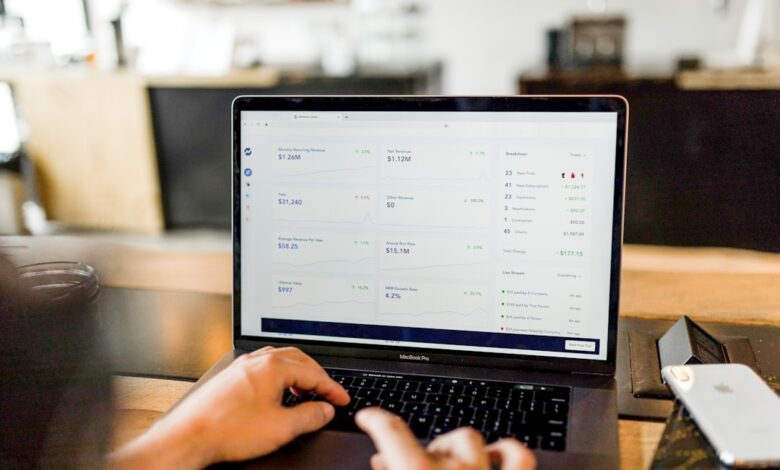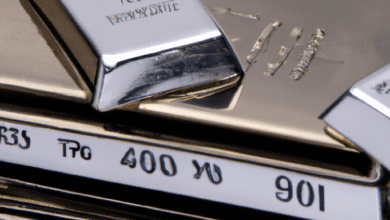Metals in Motion: Analyzing the Economic Forces Shaping Industry and Investment

In an increasingly interconnected global economy, the dynamics of metal markets play a crucial role in shaping both industrial practices and investment strategies. Metals such as silver, copper, and rare earth elements are not only fundamental to technological innovation and infrastructure development but also serve as barometers for economic health and diversification in investment portfolios. This article delves into the multifaceted roles of these metals, beginning with silver's unique position as both an industrial asset and an investment vehicle. We will explore how copper prices serve as indicators of global economic trends, the rising demand for rare earth metals driven by green energy technologies, and the ongoing debate between platinum and palladium as investment options. Additionally, we will examine how inflation affects the prices of precious and industrial metals, the future of aluminum in a sustainable economy, and the influence of mining regulations on metal prices. Through this comprehensive analysis, we aim to provide insights into how these elements are shaping the future of both industry and investment landscapes.
- 1. **Silver: A Dual Force in Industry and Investment**
- 2. **Copper's Price Signals: A Barometer for Global Economic Trends**
- 3. **Rare Earth Metals in the Green Revolution: Demand Dynamics and Future Outlook**
1. **Silver: A Dual Force in Industry and Investment**
Silver has long been regarded as a versatile metal, playing a pivotal role in both industrial applications and investment markets. On the industrial side, silver's unique properties—such as its high electrical conductivity, thermal conductivity, and resistance to corrosion—make it indispensable in various sectors. It is widely used in electronics, solar panels, medical devices, and batteries. The rise of renewable energy technologies, particularly solar energy, has significantly boosted demand for silver, as it is a key component in photovoltaic cells. This growing industrial demand contributes to price stability and can lead to upward price movements, particularly as global economies pivot towards greener technologies.
On the investment front, silver is often viewed as a safe-haven asset, similar to gold. Investors flock to silver during times of economic uncertainty, inflation, or geopolitical tensions. Its affordability compared to gold makes it an attractive option for a broader range of investors seeking to hedge against market volatility. Silver also serves as a form of portfolio diversification, offering exposure to both precious metals and industrial commodities. This dual role enhances its appeal, as investors can benefit from both the potential for price appreciation driven by industrial demand and the protective qualities of silver as an investment.
The interaction between industrial and investment demands can create dynamic pricing scenarios for silver. For instance, an increase in industrial demand can elevate prices, attracting more investors who see potential for profit. Conversely, if economic conditions falter, investment demand can surge, further pushing up prices. This interplay highlights silver's unique position in the market, where it serves not only as a critical industrial metal but also as a strategic asset in investment portfolios. As the world shifts towards sustainable practices and renewable technologies, the significance of silver in both spheres is likely to grow, making it a metal to watch closely in the coming years.
2. **Copper's Price Signals: A Barometer for Global Economic Trends**
Copper has long been regarded as a reliable indicator of global economic health, often referred to as "Dr. Copper" due to its ability to diagnose the state of the economy. The metal's price movements reflect a combination of demand and supply dynamics, making it a barometer for various economic activities. As an essential component in construction, electrical wiring, and manufacturing, copper is heavily influenced by industrial demand. When economies are expanding, demand for copper tends to rise, driving prices up. Conversely, during economic downturns, reduced industrial activity leads to a decline in copper prices.
The correlation between copper prices and economic indicators, such as GDP growth rates, manufacturing output, and consumer spending, further underscores its role as an economic signal. For instance, increased infrastructure spending, particularly in emerging markets, typically leads to higher copper consumption, resulting in elevated prices. Conversely, a slowdown in major economies, such as China or the United States, can lead to price drops, indicating reduced demand.
Additionally, copper prices can also reflect investor sentiment regarding future economic conditions. Speculators often trade copper futures based on anticipated economic trends, which can lead to price fluctuations even before tangible changes in demand occur. This reaction can create a feedback loop where rising prices spur further investment and production, reinforcing bullish market sentiment.
In summary, copper's price is not just a reflection of supply and demand; it also serves as a critical economic indicator that can provide insights into global economic trends. Investors and policymakers closely monitor these price movements to gauge the health of the economy and make informed decisions regarding investments and fiscal policies.
3. **Rare Earth Metals in the Green Revolution: Demand Dynamics and Future Outlook**
Rare earth metals play a critical role in the advancement of green technologies, which are essential for the transition to a sustainable economy. These metals, including neodymium, dysprosium, and lithium, are integral components in the production of high-performance magnets, batteries, and catalysts used in renewable energy systems, electric vehicles (EVs), and energy-efficient appliances. As the global push for cleaner energy intensifies, the demand for these metals is expected to surge.
The demand dynamics for rare earth metals are closely tied to several factors. First, the increasing production of electric vehicles is a major driver, as these vehicles rely on rare earth elements for their motors and batteries. For instance, neodymium-iron-boron magnets are crucial for the efficiency of EV motors. Additionally, government policies aimed at reducing carbon emissions and promoting renewable energy sources further stimulate demand for rare earth metals.
However, the supply of rare earth metals is concentrated in a few countries, particularly China, which dominates the market. This concentration raises concerns about supply chain vulnerabilities and geopolitical risks. As countries seek to secure their supply chains, there is a growing interest in developing domestic sources of rare earth metals, including recycling and exploring new mining opportunities.
Looking ahead, the outlook for rare earth metals appears robust, driven by the ongoing green revolution. As technologies evolve and the demand for sustainable solutions grows, these metals are likely to become even more valuable. Investments in mining and refining capabilities, along with innovations in recycling methods, will be essential to meet future demand while mitigating supply risks. Overall, rare earth metals are poised to play a pivotal role in shaping a sustainable future, making them a focal point for both industry stakeholders and investors.
In conclusion, the intricate landscape of metal markets reveals a complex interplay between industrial utility and investment potential. Silver's dual role underscores its significance in both sectors, while copper prices serve as a vital indicator of global economic health, reflecting broader trends and consumer confidence. The rising demand for rare earth metals, driven by advancements in green energy technologies, highlights the critical need for sustainable resource management in the face of environmental challenges.
As investors weigh the merits of platinum versus palladium, considerations of market stability and future demand will shape their decisions. Furthermore, the strategic inclusion of metals in investment portfolios can provide a hedge against inflation, which has a profound impact on the value of both precious and industrial metals.
Looking ahead, aluminum's role in a sustainable economy positions it as a key player in future growth, contingent on responsible mining practices and regulatory frameworks. The impact of mining regulations cannot be underestimated, as they influence supply chains and ultimately determine metal prices. As we navigate these evolving dynamics, understanding the multifaceted roles of metals will be essential for both investors and industry stakeholders seeking to adapt to and thrive in an ever-changing market landscape.





